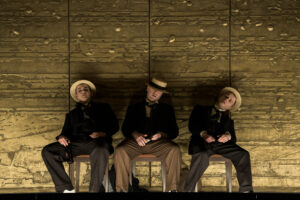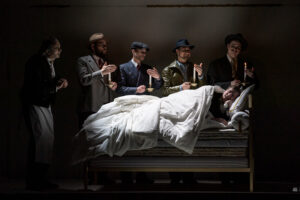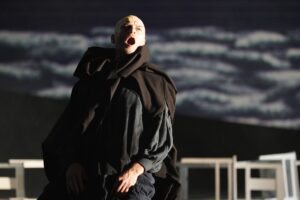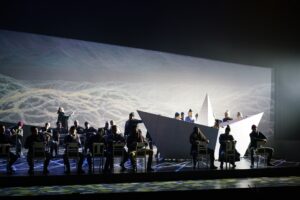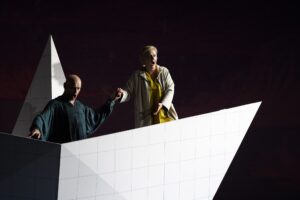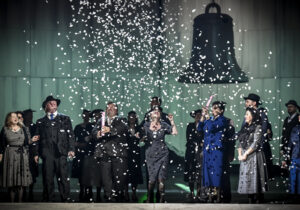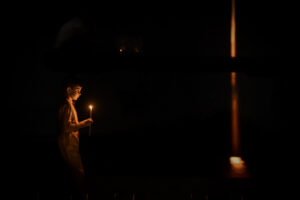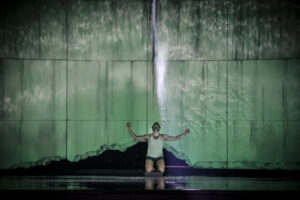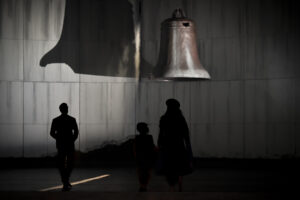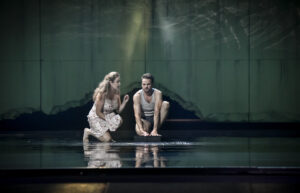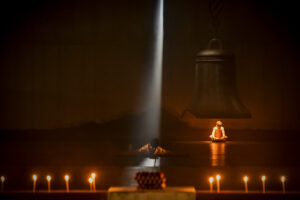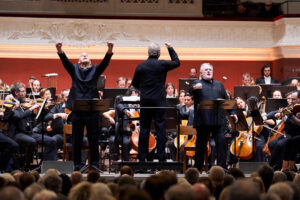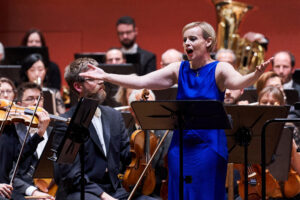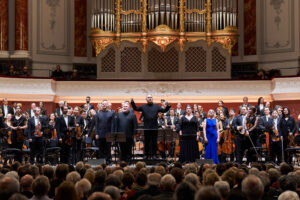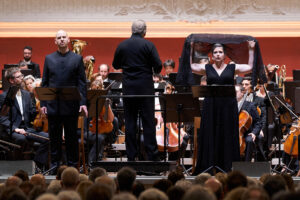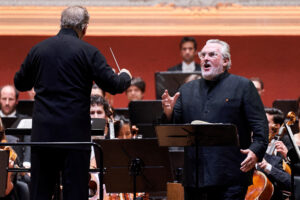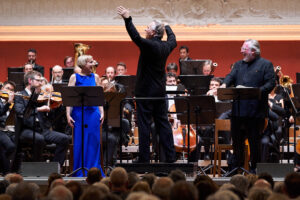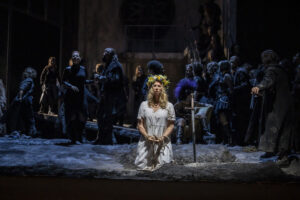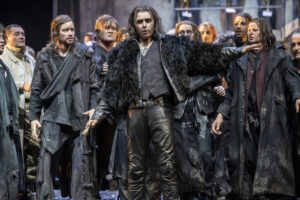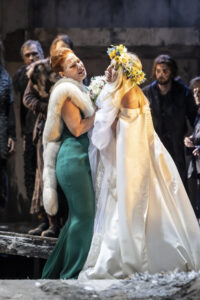Jak cię słyszą, tak cię piszą
Kiedy Gottfried Keller stracił ojca i został na świecie sam z matką i młodszą siostrą, miał zaledwie pięć lat. Rudolf – tokarz, budowniczy-samouk i głowa rodziny Kellerów – zmarł na gruźlicę tuż po trzydziestce, wcześniej pochowawszy czworo z sześciorga dzieci, których dochował się ze swą żoną Elisabeth. Pod wieloma względami był człowiekiem niezwykłym: jako nastoletni czeladnik przewędrował pół Europy i wrócił do Zurychu nie tylko jako wszechstronnie wykształcony rzemieślnik, ale też dojrzały, rozmiłowany w wolności obywatel. Zanim odszedł z tego świata, przekazał żonie szczegółowe wskazówki, jak wpoić swoje ideały jedynemu pozostałemu przy życiu synowi. Owdowiała Elisabeth ledwie wiązała koniec z końcem, dołożyła jednak wszelkich starań, by nie zawieść ambicji męża. Mały Gottfried chował się w domu wolnym od wszelkich uprzedzeń i czujnie obserwował otaczającą go rzeczywistość. Po klęsce powstania listopadowego jej nieodłącznym elementem stali się polscy emigranci, szukający schronienia pod gościnnym dachem pani Keller. Przyszły pisarz i poeta wyniósł z tamtych czasów nie tylko piękne wspomnienia przyjaźni, do których nawiązał między innymi w autobiograficznej powieści Zielony Henryk, lecz również trwałe zainteresowanie sprawą uchodźców politycznych oraz ich walką o odzyskanie utraconej państwowości.
Kolejne fale emigracji z Polski napłynęły do Szwajcarii po Wiośnie Ludów i przegranym powstaniu styczniowym. W 1863 roku Gottfried Keller – wówczas już sekretarz kantonu zuryskiego – założył wraz z hrabią Władysławem Platerem Centralny Komitet Pomocy Polakom. Wpierw finansowali zakup broni dla powstańców, a po upadku niepodległościowego zrywu organizowali wszechstronną pomoc dla blisko dwóch tysięcy tułaczy. Choć wśród prawdziwych bohaterów trafiali się czasem hochsztaplerzy, nic nie zdołało zachwiać sympatią Kellera do przybyszów z odległego kraju na wschodzie Europy. Jeśli nawet ich napominał, to delikatnie i ze współczuciem – jak w powstałej mniej więcej w tym czasie, ale wydanej dopiero w 1874 roku noweli Kleider machen Leute (w wolnym tłumaczeniu „szata zdobi człowieka”). Jej protagonistą uczynił młodego krawca Wenzla Strapinskiego, który właśnie stracił pracę i „w nieprzyjemny listopadowy dzień” ruszył szukać szczęścia gdzie indziej. Za śniadanie musiało mu starczyć kilka płatków śniegu, w kieszeni miał tylko naparstek – za to pięknie się prezentował we własnoręcznie uszytym niedzielnym ubraniu, podszytej aksamitem pelerynie i futrzanej czapie. Być może dlatego stangret mijanego po drodze powozu zaproponował mu transport do pobliskiego miasteczka, przedstawił go wszystkim jako polskiego hrabiego, po czym znikł, zanim chłopak zdążył zaprotestować. Zdezorientowany Wenzel wchodzi w rolę arystokraty – wpierw mimowolnie, później z premedytacją, kiedy zdobywa względy córki przewodniczącego rady miejskiej. Wprawdzie zostanie zdemaskowany przez zazdrosnego rywala, wszystko jednak skończy się dobrze: ukochana oświadczy, że nie musi być hrabiną, wystarczy, że zostanie żoną prawdziwego mistrza w krawieckim fachu.
Fot. Serghei Gherciu
Nowelka Kellera cieszyła się niezwykłą popularnością w ówczesnym świecie kultury niemieckojęzycznej, także w Austro-Węgrzech, gdzie wielu cesarskich poddanych budowało swój status podobnymi metodami, jak literacki Wenzel. Wśród nich także ojciec Zemlinsky’ego – urodzony w Wiedniu potomek austriackiej katoliczki i przybysza z węgierskiej Żyliny – który dodał sobie przed nazwiskiem przyimek szlachecki „von”, a przed ślubem z Klarą Semo, córką bośniackiej muzułmanki i sefardyjskiego Żyda z Sarajewa, przeszedł na judaizm. Mały Alexander urodził się zatem jako pełnoprawny członek wiedeńskiej gminy żydowskiej, ale wystąpił z niej już w 1899 roku, w związku ze sprawą Dreyfusa i narastającą falą antysemityzmu. Za komponowanie opery komicznej Kleider machen Leute wziął się w roku 1907, po wcześniejszych sukcesach Saremy i Es war einmal oraz niedoszłej premierze Der Traumgörge, planowanej w wiedeńskiej Staatsoper, pod batutą Mahlera, który tuż przed pierwszym spektaklem zrezygnował ze stanowiska dyrektora muzycznego teatru. Libretto do Kleider machen Leute – podobnie jak do pechowego Der Traumgörge – napisał Leo Feld, który znacząco skondensował narrację i nadał jej nieco lżejszy wydźwięk niż w pierwowzorze Kellera. Premiera pierwszej, trzyaktowej wersji odbyła się w 1910 roku w wiedeńskiej Volksoper. Chłodne opinie krytyków skłoniły Zemlinsky’ego do wprowadzenia gruntownych zmian w libretcie i partyturze. Po kilku nieudanych podejściach do wystawienia zrewidowanej, dwuaktowej wersji opery, Kleider machen Leute doczekała się wznowienia w 1922 roku, na deskach Neues Deutsches Theater, obecnej siedziby Opery Państwowej w Pradze.
Dzieło, odkryte na powrót dopiero w latach osiemdziesiątych, zawitało na praską scenę w lutym 2023 roku – w ramach potężnego, zakrojonego na cztery sezony czesko-niemieckiego przedsięwzięcia „Musica non grata”, którego głównym celem jest przywrócenie pamięci o dorobku twórców aktywnych w międzywojennej Czechosłowacji, wyrugowanych z życia muzycznego po dojściu nazistów do władzy: ze względu na pochodzenie, wyznanie i poglądy polityczne, ale też płeć i orientację seksualną. Projekt, rozpoczęty w roku 2020 pod egidą praskiego Teatru Narodowego i wsparty finansowo przez Ambasadę Republiki Federalnej Niemiec, już dziś można uznać za jedną z najbardziej udanych tego rodzaju inicjatyw w Europie – nastawioną na trwałe wprowadzenie zapomnianych dzieł do krwiobiegu kultury, nie zaś jednorazowy, powierzchowny efekt, trafiający w gust mniej wyrobionej publiczności.
Fot. Serghei Gherciu
Stąd też pomysł na wystawienie Kleider machen Leute siłami przede wszystkim muzyków miejscowych, pod wodzą dwóch artystek, których współpracę doceniono już wcześniej, przy okazji inscenizacji Katii Kabanowej Janaczka w Komische Oper Berlin: holenderskiej reżyserki Jetske Mijnssen i litewskiej dyrygentki Giedrė Šlekytė. Mijnssen reprezentuje typowy dla swego kraju styl uprawiania teatru, oszczędny w środkach wyrazu, chwilami nawiązujący do surowego minimalizmu Willy’ego Deckera. W jej ujęciu akcja opery Zemlinsky’ego rozgrywa się przeważnie na proscenium, w przestrzeni ograniczonej symetryczną, trójdzielną dekoracją Herberta Murauera (pomysłowo oświetloną przez Bernda Purkrabka), której głównym elementem jest półokrągła ściana umieszczona na scenie obrotowej. Scenografię dopełniają proste meble, pełniące czasem funkcję nieoczywistych rekwizytów (przykładem podróż Wenzla w karocy z kilku krzeseł, za każdym nawrotem sceny obrotowej ukazująca bohatera w innej groteskowej pozycji). Reżyserka zrównoważyła skąpość dekoracji przerysowanym, niemal ekspresjonistycznym gestem teatralnym – na ogół z dobrym skutkiem, choć w roztańczonej partyturze Zemlinsky’ego przydałoby się więcej pracy choreograficznej (odpowiedzialny za ruch sceniczny Dustin Klein postawił raczej na pantomimę, skądinąd spektakularną, między innymi w spowolnionej scenie pościgu za zdemaskowanym fałszywym hrabią). Najpoważniejszy błąd inscenizacji tkwi jednak w niedostatecznym wyeksponowaniu wrodzonej elegancji Wenzla. Młody krawiec, jeśli nie liczyć futrzanej czapy, niczym się nie wyróżniał z tłumu postaci, ubranych przez Julię Katharinę Berndt w kostiumy z międzywojnia – od słomkowych kapeluszy pork pie z szalonych lat dwudziestych aż po jazzowe garnitury w stylu zoot, nieodłączny element stylizacji późniejszych polskich bikiniarzy.
Czysta i precyzyjna reżyseria Mijnssen szła jednak bok w bok z dramaturgią utworu, choć kilkoro solistów wpędziła w pułapkę akustyczną – ich głosy, wyeksponowane na proscenium, często brzmiały nienaturalnie, wybijając się nadmiernie z tkanki orkiestrowej. Z tej opresji wyszli bez szwanku wykonawcy dwóch głównych partii – dysponujący mocnym, dźwięcznym i pewnie prowadzonym tenorem Joseph Dennis w roli Wenzla oraz jego partnerka Nettchen w osobie Jany Sibery, obdarzonej sopranem miękkim, pięknie nasyconym i bardzo zmysłowym (prześlicznie zaśpiewana aria „Lehn deine Wang’ an meine Wang’” z tekstem Heinego na początku II aktu). Świetne momenty mieli też Ivo Hrachovec w basowej partii Oberżysty oraz baryton Markus Butter w roli Melchiora Böhniego, odrzuconego konkurenta do ręki Nettchen. Pozostali członkowie rozbudowanej, kilkunastoosobowej obsady z mniejszym powodzeniem walczyli z kaprysami akustyki. Trudno mi osądzić, na ile mogła temu zapobiec Giedrė Šlekytė, poza wspomnianym zastrzeżeniem prowadząca zespoły Opery Państwowej bardzo sprawnie, energiczną ręką, z doskonałym wyczuciem mozaikowego stylu tej kompozycji, łączącej późnoromantyczne inspiracje muzyką Wagnera i Ryszarda Straussa – a co za tym idzie, także młodego Schönberga – z iście Mozartowską brawurą w kształtowaniu ansambli i wszechobecną lekkością wiedeńskiej operetki.
Fot. Serghei Gherciu
Kleider machen Leute nie jest arcydziełem na miarę Karła i Tragedii florenckiej. Z pewnością jednak zasługuje na miłość: podobnie jak skromny i nieśmiały Wenzel Strapinski, hrabia, owszem, fałszywy, wciąż jednak ujmujący w swej obszernej, podbitej czarnym aksamitem pelerynie, i z bladym, szlachetnym obliczem polskiego emigranta.

